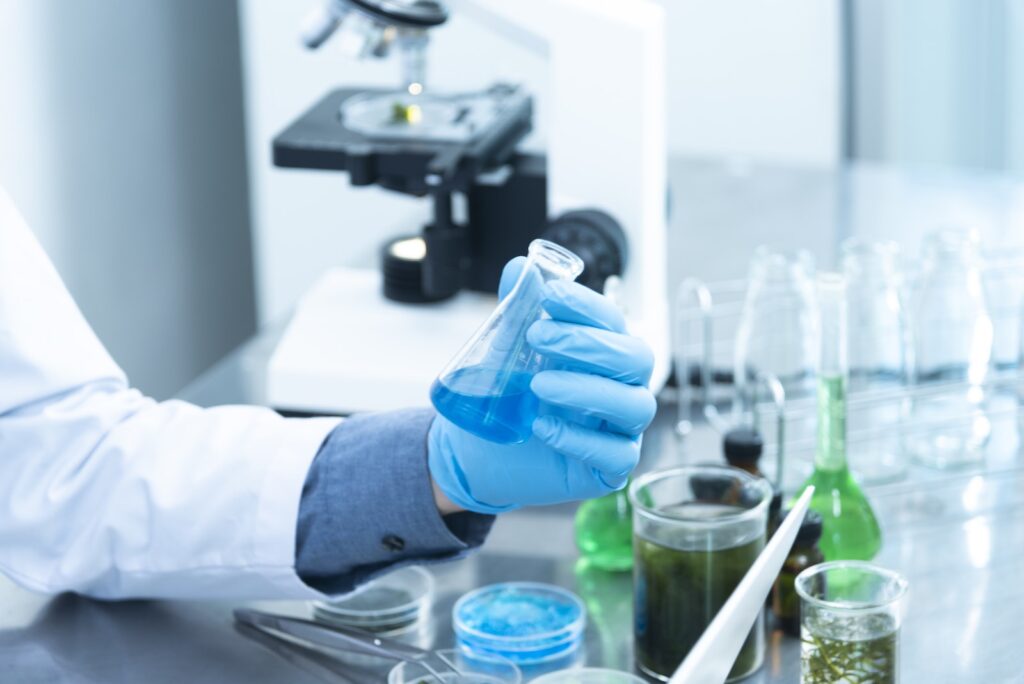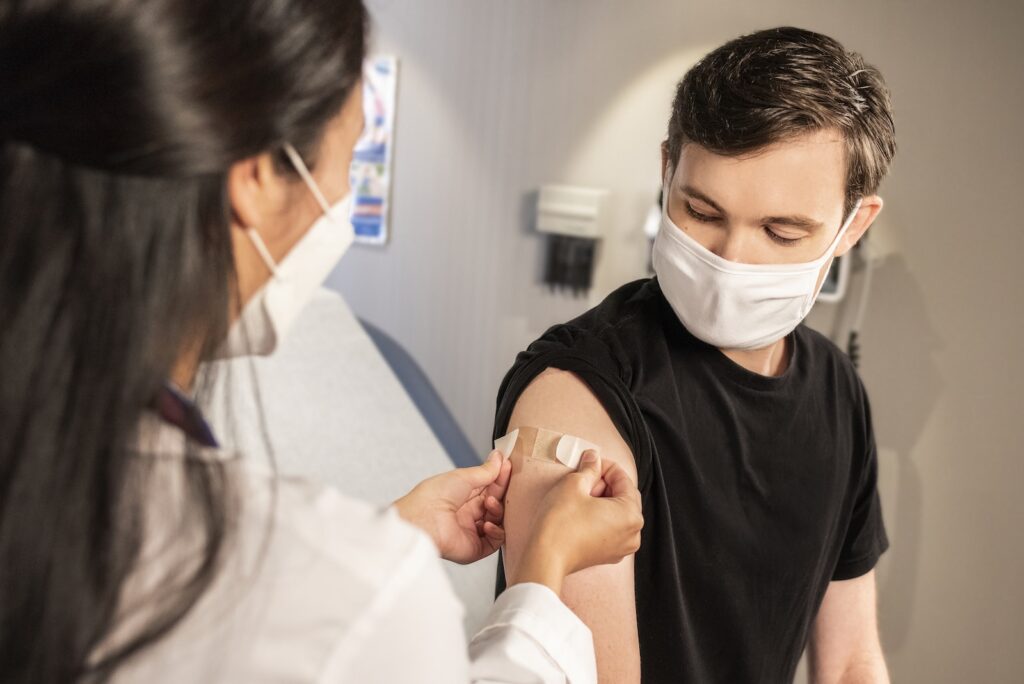Table of Contents
The Evolution of Medical Technology: A Brief History
Technology has played a significant role in advancing the field of medicine. In fact, medical technology has come a long way from its humble beginnings as simply tools for diagnosis and treatment to the cutting-edge technologies we have today that allow us to perform complex surgeries with utmost precision.
One notable advancement in medical technology is the X-ray machine. It was first discovered by German physicist Wilhelm Conrad Röntgen in 1895, and it revolutionized the way doctors diagnose illnesses. X-rays enable physicians to see inside the body without having to make any incisions or invasive procedures, making it an essential tool in diagnosing conditions such as bone fractures and tuberculosis.
In addition, technological innovations have also led to improvements in surgical procedures. The introduction of anesthesia made surgeries less painful and stressful for patients while allowing physicians more time during operations. Meanwhile, laparoscopy—a minimally invasive surgery technique where tiny cameras are inserted into small incisions—has allowed surgeons greater visibility during procedures like appendectomies or gallbladder removals.
Another major development in medical technology is telemedicine—the use of electronic communication methods like videoconferencing to provide healthcare services remotely. This innovation provides access to expert care regardless of location; enabling patients living in remote areas or those who require specialized expertise immediate attention at lower costs than traditional consultations.
In conclusion,The evolution of medical technology has vastly improved our ability both diagnose and treat illnesses since its inception including but not limited to digitization, miniaturization improvement on diagnostic imaging techniques among others which drives better patient outcomes via early detection & faster treatment response rates.”
How Technology and Science Improve Accuracy in Diagnosis
In medicine, accurate diagnosis is critical for effective treatment. Incorrect diagnoses can lead to inappropriate treatments or interventions and worsen patient outcomes. However, with the advancements in science and technology, physicians now have access to data-driven tools that help improve diagnostic accuracy.
Precision Medicine is a field of medicine that focuses on tailoring medical care based on individual variations such as genetic differences, environmental factors and lifestyle habits. DNA sequencing analysis technologies enable clinicians look at patients’ DNA which can help them identify inherited diseases or predispositions towards certain conditions much earlier compared to traditional laboratory tests.
The combination of big data analytics with machine learning algorithms has enabled more accurate predictions about disease symptoms (such as risk prediction) by analyzing large volumes of clinical information coming from multiple sources like electronic health records (EHRs), biometric wearables etc. Sophisticated artificial intelligence tools are also capable of generating personalized recommendations for each patient informed by previous diagnoses and treatment outcomes
Surgical procedures continue evolving rapidly with new imaging techniques providing detailed views inside the body — enabling minimally invasive surgical options than ever before. For example, robotic-assisted surgery —where robots perform some parts of open surgery has shown improved precision over conventional methods resulting in fewer complications during after-surgery recovery time being reduced dramatically.
Telemedicine also plays an important role in diagnosing remote areas where specialists are unable to travel physically.Smartphone-based applications let doctors remotely monitor patients’ health status providing better accessibility without visiting hospital.
Digital Diagnostics:Digitization allows automatic collection data from various radiology databases making Artificial Intelligence assisted diagnostics accessible across hospitals worldwide. AI -powered image recognition systems play vital role in early detection of diseases such as cancer and heart disease revealing insights that are often not visible with traditional methods.
Conclusion
The progress of technology has transformed the healthcare sector by improving accuracy to a degree unachievable using conventional means. Advanced diagnostic tools provide an in-depth understanding of patients’ health status, enabling doctors to deliver precision medicine for each case. As we journey into the future, we can look forward to even more innovative technologies transforming this vital sector further.
Innovative Treatment Methods Brought about by Technological Advancements
Technological advancements have revolutionized healthcare in more ways than one. One of the greatest impacts is on innovative treatment methods that are now available for patients.
One such method is precision medicine, which utilizes genetic testing and analysis to tailor treatments specific to an individual’s genotype. This approach has been particularly effective in treating cancer, as it allows doctors to identify mutations responsible for a patient’s tumor growth and target those with specialized therapies.
In addition, robotic surgery has become increasingly popular due to its minimally-invasive nature and improved precision compared to traditional open surgeries. With this technology, surgeons can perform complex procedures through tiny incisions while controlling robotic arms equipped with advanced tools.
The use of virtual reality (VR) is another exciting development in innovative treatments. VR technology allows patients to undergo therapy sessions from the comfort of their own homes or hospital beds by immersing them into simulated environments designed specifically for their healing process. Studies have shown that VR therapy has effectively helped reduce pain levels and anxiety among patients undergoing a variety of medical conditions.
Another technological advancement worth noting is telemedicine – remote consultations with physicians via video conferencing technologies that eliminates the need for physical visits altogether. While not suitable for all types of treatments, telemedicine presents an excellent option when traveling or mobility becomes a challenge.
In summary,
- Newer methods like precision medicine allow tailored treatment according to genetics and genotype
- Robotic surgery aids faster recovery with smaller scars alongside increased surgical accuracy
Wearable Devices and their Impact on Patient Care
Wearable devices, also known as wearables, are becoming increasingly popular in the healthcare industry. Wearable devices can be worn on various parts of the body and can track a patient’s health and activity levels continuously. They use sensors to collect data such as heart rate, blood pressure, sleep patterns, physical activity levels, and more.
The impact of wearable technology on patient care is significant. Wearable devices allow healthcare professionals to monitor their patients’ health conditions remotely without having them physically present at clinics or hospitals. This has revolutionized the way doctors diagnose illnesses and manage treatment plans for chronic diseases.
Better Patient OutcomesPatient outcomes have improved with the use of wearable technology in medicine. The ability to monitor vital signs around-the-clock has reduced hospital readmissions and emergency room visits significantly. Patients with chronic illnesses like diabetes or hypertension can now receive early intervention when they show signs of complications.
Remote MonitoringOne important advantage that wearable technology offers is remote monitoring capabilities. Healthcare providers can access real-time data from their patients’ wearables via smartphone apps or online portals which makes it easier for them to provide timely interventions when needed.
Personalized Treatment PlansThe information gathered by these wearables helps medical professionals develop tailored treatment plans based on each individual patient’s unique needs. It provides physicians with insights into a person’s daily routine making it possible for them to understand if certain behaviours are contributing positively or negatively towards their overall wellbeing. Better Disease Management
Inflammatory bowel disease (IBD) affects millions of people worldwide and requires frequent check-ups along with medication adjustment often requiring an endoscopy procedure which isn’t always comfortable – especially over long periods. In recent years, a wearable technology company has developed an ingestible device with sensors that can detect IBD symptoms in real-time and provide physicians with essential data for disease management.
Challenges of Wearable TechnologyDespite the benefits of wearable technology, there are still some challenges to overcome such as data protection and security concerns. The collection of personal health information is sensitive, so strong privacy policies must be put in place.
In conclusion, wearables have transformed patient care by giving providers access to critical information about individual patients’ health conditions while improving outcomes. Although it presents certain challenges such as data privacy risks, these devices could play a more significant role in healthcare systems globally over time.
Collaborative Research Initiatives between Medicine, Science, and Technology for Better Healthcare Outcomes.
Medical research is a constantly evolving field, and advances in science and technology have played a significant role in improving healthcare outcomes for patients. However, it’s not just the advancements in technology alone that are driving innovation but also the result of collaboration between different fields such as medicine, science, and tech.
The collaborative efforts of professionals from these fields have given us groundbreaking technologies like robotic-assisted surgery systems that enable surgeons to perform precise procedures with fewer complications. Other examples include nanotechnology-based targeted drug delivery systems which minimize adverse effects on healthy cells while maximizing treatment efficiency for cancer patients.
Moreover, medical researchers can now leverage vast amounts of data by integrating AI-powered algorithms into their studies. This integration will help them identify patterns that may be used to formulate better diagnoses or predict patient outcomes accurately.
Research initiatives bring together diverse teams comprising doctors, scientists, engineers and other specialists who contribute their expertise towards solving complex rehabilitation problems through scientific discovery. These collaborations foster an environment where people balance different points of view while working towards common goals – improved well-being for all individuals globally.
In conclusion,The future holds limitless possibilities when it comes to innovative healthcare solutions enabled by cross-functional teamwork among medicine practitioners/scientists/technologists driven by shared concerns about human health needs regardless of geography or socio-economic status worldwide!The Future of Medicine: Exploring the Possibilities with Cutting-edge Technologies
As technology and science continue to advance, the future of medicine presents a wide range of possibilities that were once thought impossible. Cutting-edge technologies such as artificial intelligence (AI), robotics, nanotechnology, gene editing and more are being developed at an unprecedented rate. These advanced technologies have already begun to revolutionize patient care by improving diagnosis accuracy, innovative treatment options and even making healthcare more accessible.
The integration of AI in healthcare is one of the most promising advances that will completely change how medical professionals operate. With machine learning algorithms embedded into diagnostic tools, physicians can analyze massive amounts of data with incredible precision thus leading to early detection and better diagnoses while reducing human error rates.
Robotic surgery is another area where significant advancements are being made which could lead us towards comprehensive remote surgeries without any physical limitations in terms of distance or accessibility for surgeons or patients alike.
Nanotechnology also offers limitless possibilities for advancing treatments for various diseases like cancer. Nanoparticles with specific properties can be designed to deliver drugs exactly where they’re needed within our cells – reducing side effects seen frequently today when targeting healthy tissue along with sick cells.
The future isn’t just about developing new technology; it’s also about using existing technology creatively to solve major health issues around the world. For instance, mobile apps and wearable devices enable real-time monitoring allowing doctors access to crucial updates on their patients’ conditions remotely through sophisticated sensors installed within them over time..
In summary, we’re witnessing some breathtaking developments in pharmaceuticals and medical technology that promises personalized medicine tailored specifically for each individual’s body type while providing outstanding results compared to current generic approaches across sectors from R&D operations all the way down into clinical care offered daily by hospitals worldwide – this truly marks a milestone shift towards patient-centric care.




